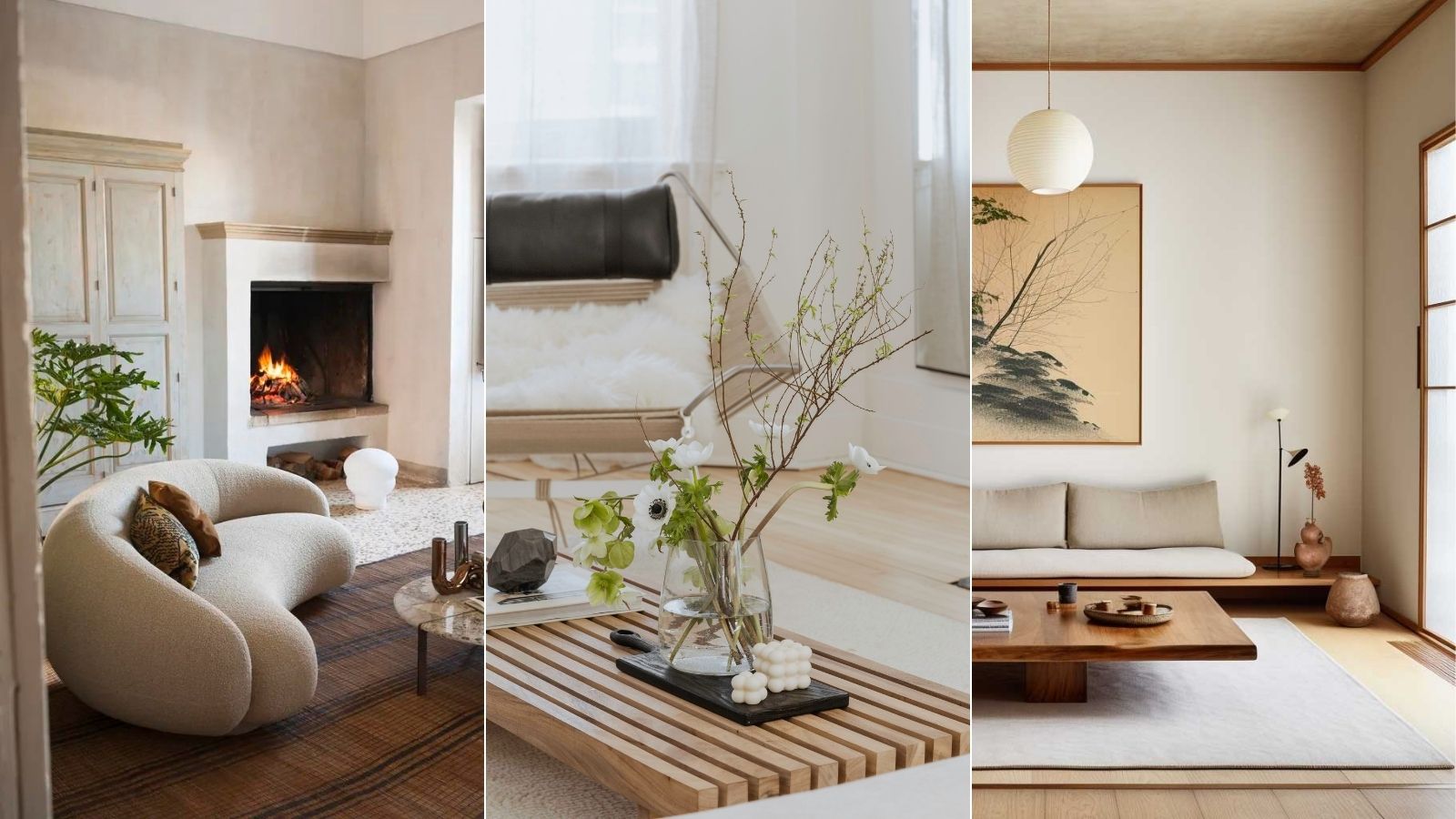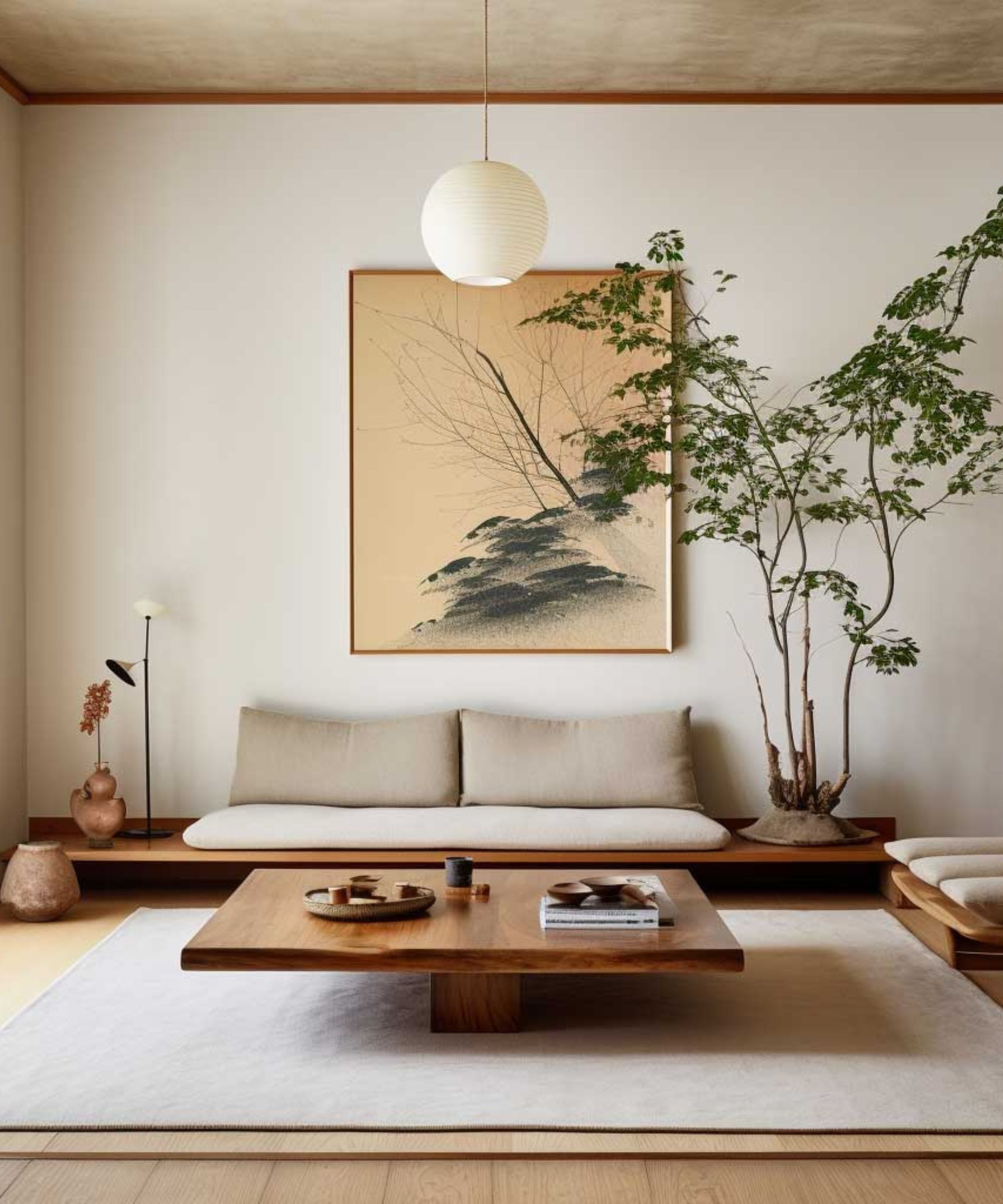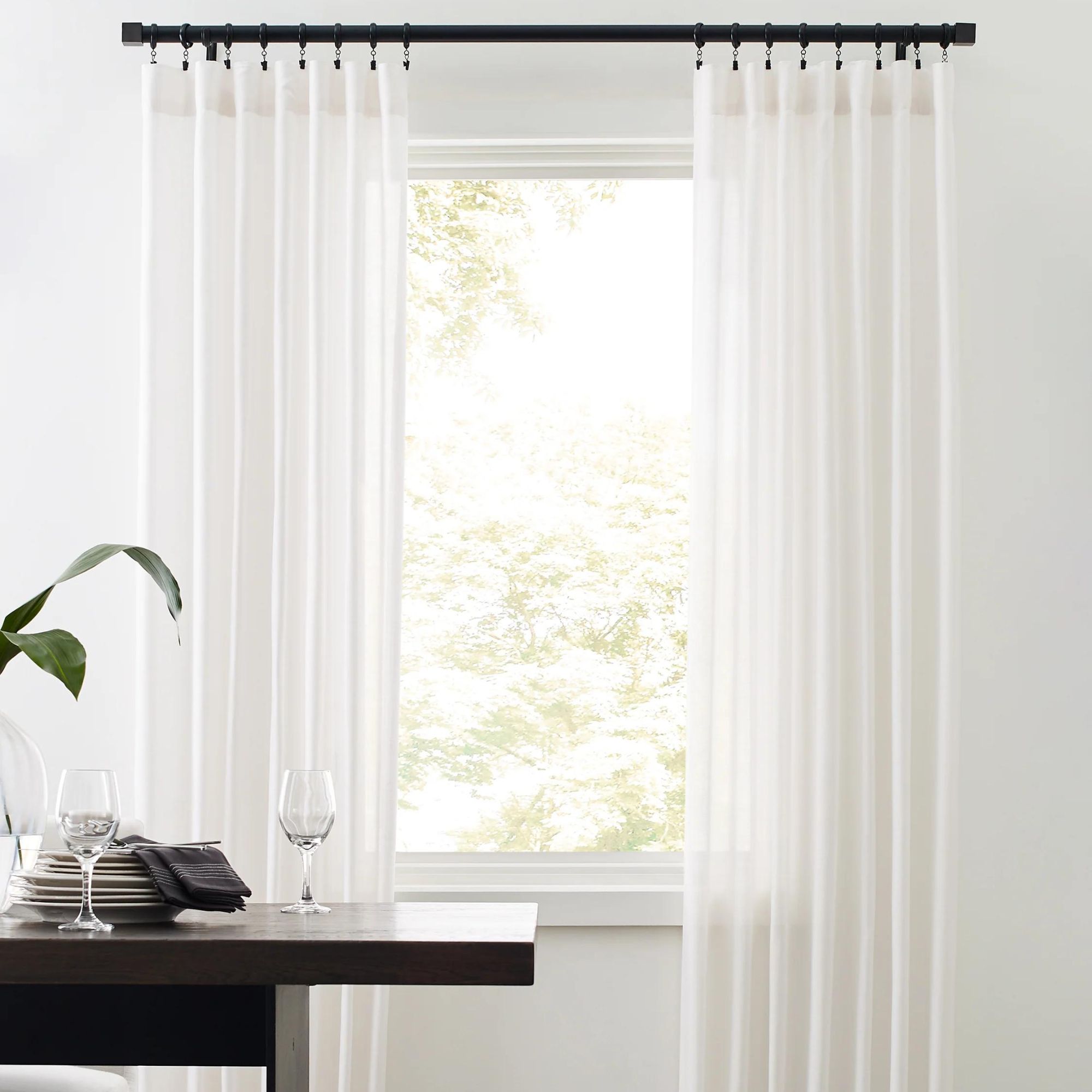9 Japandi living room ideas to add this calming design style to your interiors
If sustainability and wellness-inspired interiors fit your style, these Japandi living room ideas are sure to inspire


- 1. Choose a neutral, muted color scheme
- 2. Make the most of natural light
- 3. Introduce natural materials
- 4. Bring in furniture with organic shapes and materials
- 5. Add interest with soft furnishings and decorative items
- 6. Utilise additional lighting for a sense of coziness
- 7. Add plenty of plants and greenery
- 8. Declutter your living room
- 9. Add character with ceramics
Japandi living rooms capture the essence of the design style perfectly, and it's been rising in popularity in recent years. Thanks to its focus on creating spaces that cater to wellbeing while promoting sustainable living, Japandi style is fast becoming a go-to interior design style.
When thinking about any living room ideas, creating a space that feels relaxing and inviting is always a high priority, but the Japandi style takes it one step further. There are key design elements that simply can't be ignored – natural wood tones, organic materials and the addition of nature are all crucial to creating a successful Japandi living room scheme.
Knowing where to start on your redesign can be a minefield, so we've asked interior designers for their thoughts on creating a Japandi living room, from the key design basics to their favorite ways to add decorative details.
Japandi living room ideas
With so many interior design styles to choose from, it can be tricky to decipher the key elements of them all, but Japandi design, once broken down, is a simple design and lifestyle ethos to understand.
Although there is a distinct aesthetic to Japandi style, it's important to understand that it is more than an interior design style, and it's the complete opposite of an interior design trend. 'While we're completely aware of the growing focus on 'Japandi', we believe that the style that it covers is anything but a trend. It is fundamentally concerned with creating wellbeing for people through architecture and design,' explains the team at Norm Architects.
'The Scandinavian and the traditional Japanese design traditions are bound by a shared understanding of embedded qualities of simplicity, functionality, refinement, and attention to detail. There is a mutual understanding and respect in both Scandinavia and Japan for the use of natural materials in design and architecture, a fondness of muted color palettes, and a humble approach to expressivity through genuine craftsmanship,' they add.
The appreciation for Japandi is clearly growing, and for good reason. 'This style is a delicate fusion of Japanese and Scandinavian elements. The aim is to create a calming, harmonious atmosphere,' explains Cinzia Moretti, Creative Director at Moretti Interior Design. From soothing color schemes to embracing nature, there's something here to suit every living room.
Design expertise in your inbox – from inspiring decorating ideas and beautiful celebrity homes to practical gardening advice and shopping round-ups.
1. Choose a neutral, muted color scheme

Japandi style is all about creating a calming, minimal space. As such, a Japandi living room should lean towards a more neutral color scheme. 'To create a Japandi look, first of all, you will have to opt for neutral, muted tones: think beige, taupe, oatmeal and stone,' says Cinzia Moretti. This is a great place to start if you're considering the wall color and upholstery of large furniture items, such as a sofa.
This doesn't mean you can't inject any color, though. If you like to include subtle hints of more vibrant hues in your designs, this fits in perfectly with Japandi style. Take inspiration from Scandi design elements with hints of color through decorative pieces around the living room.
'You can introduce a contrasting color too. Opt for soft Scandi shades of pale pink, blue, green, or grey, or add some richness with a darker accent color, such as black or charcoal grey,' Cinzia recommends. 'In fact, you often see these deeper tones in Japanese interiors, and they are a clever way to add interest to minimalistic décor,' she adds.
2. Make the most of natural light

In keeping with the concept of creating harmonious designs that promote wellbeing, natural light is so important in a Japandi living room. There are several recognised benefits to increased levels of natural light, so consider how to increase the natural light in your living room.
'Maximize natural light by keeping window treatments minimal or opting for sheer curtains that allow sunlight to filter through,' advises interior designer Nareg Taimoorian. 'Natural light not only brightens the space but also enhances the connection to the outdoors, a key aspect of both Japanese and Scandinavian design,' he adds.
If you're living room doesn't benefit from much natural light, there are a few innovative ways to get around it. Decorating with mirrors helps to bounce light around a room, ideal if you only have a small window connecting your living room to the outside world. Alternatively, in spaces where it seems impossible to introduce any natural light, invest in daylight or SAD lamps, which mimic the effect of natural light.
3. Introduce natural materials

When thinking about the design elements of Japandi style, look to natural wood tones that feel organic and offer an essence of nature in your living room. 'Japandi is a fusion of two complementary styles with the same ethos; a natural and minimalist style that is calm and comfortable,' explains Tiina Vahtola, Interior Designer/Founder at Talo Studios.
Once you've decided on your paint colors, the next step is introducing elements that add interest and balance. 'A neutral background can be combined with natural elements that bring in the outdoors, and artisanal elements that make the space feel authentic, with a focus on quality craftsmanship,' says Tiina. 'A touch of wood can come in through furniture, flooring, or a simple wooden bowl on a coffee table.'
When deciding on the type of wood you want to introduce to your living room theme, think about the finish as well as the environmental impact. 'In terms of materials, natural fibers and sustainable materials are key elements in the Japandi style,' says Cinzia Moretti, adding 'wood, rattan, bamboo, wool, and cotton are key elements in the Japandi style.'
4. Bring in furniture with organic shapes and materials

The furniture you use in your Japandi living room is just as important as the paint colors. In other interior design styles, you might opt for very casual, oversized sofas that you can sink into, but Japandi style calls you pieces that feel more organic and considered.
'Opt for minimalist pieces with clean lines and organic shapes. For example, a low-profile wooden sofa with simple cushions or a sleek Scandinavian armchair made from natural wood would be ideal. Keep furnishings minimal and functional and avoid cluttering the space with too many pieces of furniture,' says Nareg Taimoorian.
When it comes to the living room furniture upholstery, continue the organic theme through the materials chosen. 'Natural textiles like linen, cotton or wool can be applied through drapery, furniture or toss cushions and rugs,' adds Tiina Vahtola. These elements still function as comfortable seating options, they simply take on a more minimalist aesthetic.
5. Add interest with soft furnishings and decorative items

With so many neutral colors and sleek wood tones, your living room can begin to feel a bit flat and lacking visual interest. This is where those all-important decorative details come into play. In a Japandi living room, subtle hints of color and appropriate patterns can be added through cushions, throws and decorative display items.
'If you particularly like to introduce the Japanese elements, think about their traditional patterns in their décor. So, cushions and curtains are a good starting point to add these,' says Cinzia Moretti. 'You can also add the Japanese style with accessories. Mirrors, picture frames, table lamps, vases and even carefully curated artwork can do the trick,' she adds.
6. Utilise additional lighting for a sense of coziness

When designing a Japandi living room, it's important to remember that this is a space for relaxing and unwinding. So, while adhering to the natural, organic ethos the aesthetic is renowned for, make sure you include additional elements such as mood lighting to add a sense of coziness to the scheme.
'A statement living room lighting fixture with a minimalist design, such as a pendant lamp or a sculptural floor lamp, can also draw the eye and add warmth to the room,' explains Nareg Taimoorian. Opt for sleek designs over more bulky frames, and stick to a neutral color palette when it comes to a lamp shade – this is a great opportunity to add some of those patterns that often feature in Japanese design.
7. Add plenty of plants and greenery

Plants are key to this design style, so no Japandi living room is complete without the addition of nature. 'Introduce greenery with potted plants or fresh flowers to bring life and freshness to the room,' says Nareg Taimoorian, recommending you 'choose low-maintenance plants such as succulents, bonsai trees, or bamboo, which are common in both Japanese and Scandinavian interiors.'
If you're not the best at keeping plants alive, there are alternative options to introduce nature into your living room. 'Dried branches and flowers in a handcrafted ceramic vase or a hand painted floral print help create that sense of well-being and connection to nature,' says Tiina Vahtola.
This is a great way to add a decorative element in a focused way – if you want to add a hint of color, a decorative pot filled with plants or an eye-catching print depicting nature is a subtle, yet effective way to do so.
8. Declutter your living room

As with all minimalist design styles, Japandi advocates clutter-free spaces, so ensure everything that belongs in your living room has a designated home and that any surfaces and shelving are free of unnecessary items.
'The minimalist Japandi vibe advocates zero clutter, which is one of the reasons why it’s well suited for small space/open plan living. However, functionality and well-being are also very important,' explains Cinzia Moretti.
If you're undergoing a complete living room redesign, sort out all of your living room items and belongings that are currently kept in the living room, and decide whether they should be kept elsewhere, or if you need them at all. This more organized approach to your home leans into the calming, sustainable style Japandi design is known for.
9. Add character with ceramics

Continuing on the theme of craftsmanship, beautifully made ceramic pieces are a staple in Japandi design. A popular and historic craft in Japan, introducing a statement vase or textured bowl is a fitting way to add dimension and interest to your living room.
'Incorporate handmade ceramics, imperfect pottery, or vintage objects with a weathered patina,' Nareg Taimoorian recommends. The addition of these items isn't simply for visual appeal, but to add that sense of live-in style, and promotes the idea of decorating with treasured items that you love.
'These items add character and authenticity to the space, highlighting the beauty of imperfection,' adds Nareg. This ideology refers back to the idea of incorporating organic materials and shapes into your living room. Japandi schemes are all about nature and introducing purposeful elements – a beautifully weathered pot or a ceramic decor piece you've inherited will add much more to your living room than something shiny and new.
A Japandi living room promotes wellness, relaxation, and embracing nature. Creating a scheme in this design style is easier than you may think – warm neutrals, natural, organic shapes and plenty of plants are at this style's core. So, introduce a balance of treasured belongings, remove unnecessary clutter, and try to live more sustainably – it's all about living slowly and making your living room a relaxing oasis.

I’ve worked in the interiors magazine industry for the past five years and joined Homes & Gardens at the beginning of 2024 as the Kitchens & Bathrooms editor. While I love every part of interior design, kitchens and bathrooms are some of the most exciting to design, conceptualize, and write about. There are so many trends, materials, colors, and playful decor elements to explore and experiment with.





